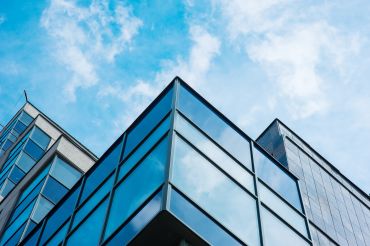‘How Many Square Feet?’ Is Just the Beginning in Workplace Design
By Elizabeth Lowrey March 20, 2023 10:00 am
reprints
If utilization metrics are the foundation of your workspace planning, you are probably missing critical data. Powerful workplace trends require new thinking about productivity, engagement, innovation and employee retention — and strategies for improving them with innovative workplace design. If you’re renewing a lease or readjusting your current space, you and your team need to incorporate these disciplines into your planning.
To attract the best talent, companies are seeking Class A office buildings that offer top amenities, proximity to talent pools, and workspace designs that support engagement, collaboration, well-being and balance. Between 2019 and 2021, prime Class A rents grew by nearly 13.5 percent, compared to just 2.5 percent among nonprime Class A buildings, according to CBRE.
It’s not enough, though, to lease a Class A “magnet” office space and expect employees to do the rest. Workspace planning today starts with setting goals for an employee experience. Employees want to feel engaged, empowered and involved in designing their space.

Amenities like dry-cleaning or an Amazon package return service have a role if they help toward an emotional goal like balance.
Three principles can get you started on this new path.
Design for experience. Employee experience design is dedicated to creating the most satisfying interactions among people, their spaces and their teams. What environments, both physical and psychological, make people feel that their contribution matters? As workplace strategists and designers, we believe that employees want to work in environments that are comfortable, inspiring, offer conveniences, and are conducive to their productivity and success.
I have a floor-to-ceiling wall in my office where team members post photographs, diagrams, pictures from fashion magazines, landscapes, cartoons, slogans — anything they find inspiring. It’s creative and shared and surprising and fun, which is exactly how I want my team to feel. If we need to use a whiteboard, we go to another room.
I want playfulness in my space because it reminds the team why we are working as designers — to create, to solve problems in new ways, to surprise, and to bring joyful energy to our craft of making workspaces.
Design for engagement. Higher employee engagement means higher productivity and lower costs. After a slow climb from 2010 to 2021, employee engagement is on the decline. The sharpest drops are in employee’s beliefs that they have clear expectations, the right equipment, the opportunity to do what they do best every day, and a connection to the organization’s mission.
You might be surprised at how many obvious barriers to engagement are embedded in your workplace. Consider, for example: Are meeting spaces conveniently located, inviting, and equipped for in-person and remote access? Are social spaces inviting and encouraging of creative collisions, in which people gather and brainstorm informally? Is the environment designed to encourage learning and mentoring? Do people use in-person time to brainstorm, make decisions, and clarify expectations, arriving informed via email, Slack, Teams, etc.?
Workspace designers and real estate managers can build engagement into the employee experience by designing spaces that are not just flexible, but also encourage the most valuable interactions. For example: Smaller private spaces might be designed to serve as “retreats” for both solitary, concentrated work, and one-on-one mentoring.
Co-create your workplace design. David Chipperfield, the 2023 recipient of the Pritzker Architecture Prize, recently said, “Architecture is not just [a] product. It’s about how you lead collaborations.” That is doubly true for workspace design.
Employees can and should co-create their office in partnership with top executives, designers, developers, brokers and other stakeholders. Collaboration reveals what engages and energizes people about their space in real time, which is essential to a good outcome given continuing workplace disruptions. A powerful side benefit of co-creation is that it instills a sense of ownership in the workplace itself. As Diane Gherson, IBM’s HR head, notes, “People are less likely to resist change when they’ve had a hand in shaping it.”
Co-creation will be immensely important in the next 10 years as Generation Alpha enters the workforce. They will be the first post-COVID generation, and the first to grow up surrounded by hybrid working and learning. They will have to adapt quickly to artificial intelligence. They will have different demands and expectations of their workplace than previous generations.
“How many square feet?” The question gets answered when you’ve engaged a process that produces more than budget outcomes. Utilization metrics are one piece of a strategic plan to increase engagement, improve experience, and invite employees to join the creative process.
Whether signing a lease, reallocating space or inventing a new workplace entirely, connect the change process to the most high-level, long-term financial and cultural aspirations of your organization. Don’t make a decision based on old-fashioned equations. Instead, expand this moment into an opportunity to drive a revolution in your workplace.
Elizabeth Lowrey is a principal at Elkus Manfredi Architects, and a workplace strategist and designer.


